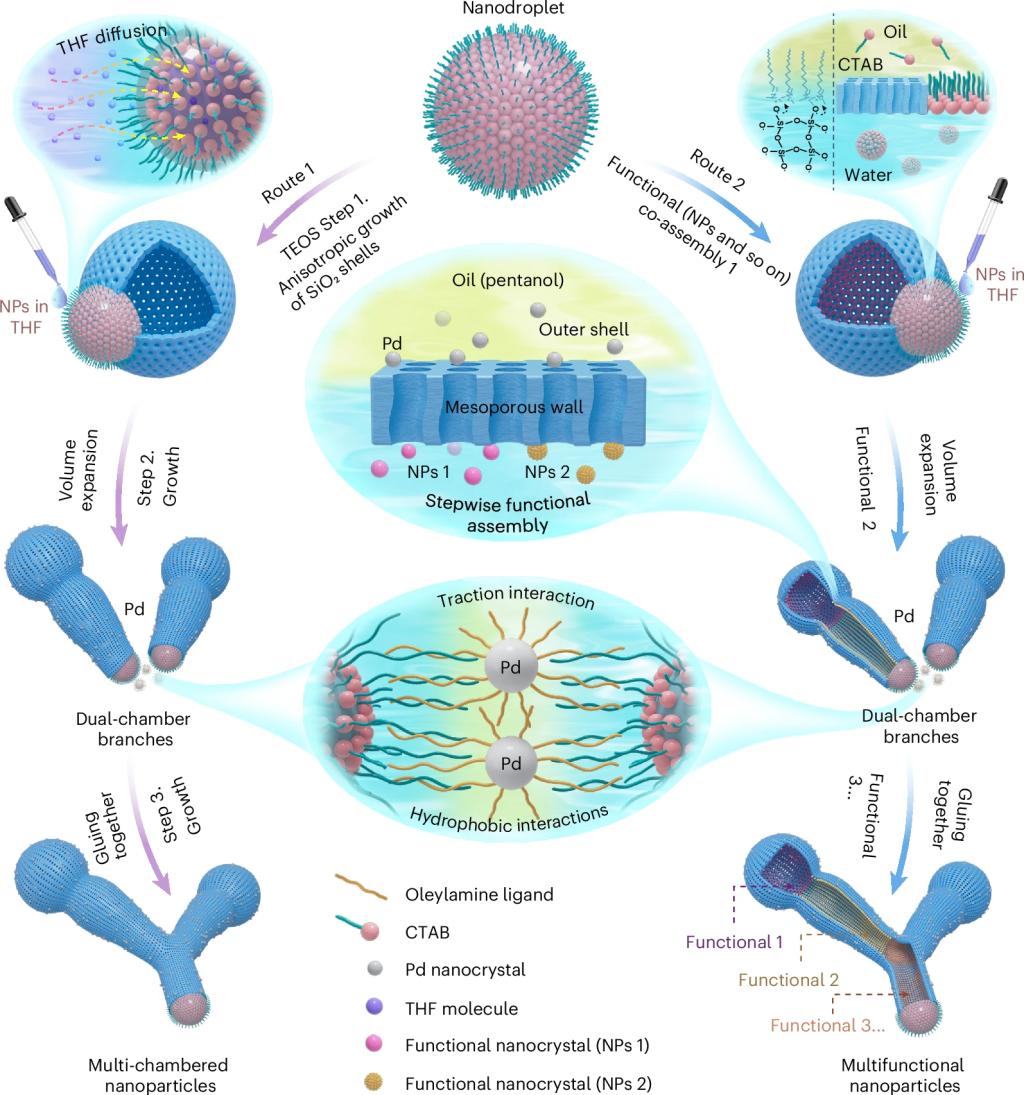In biological systems, biological structures such as cells achieve the coordinated regulation of energy conversion and multi-step biochemical reactions through their ingenious multi-chambered designs. Developing artificial nanomaterial systems that can convert external stimuli to achieve self-sustained motion at the nanoscale (such as self-rotation), while simultaneously integrating and spatially positioning multiple active sites to elucidate the intramolecular diffusion patterns of molecules, has been of great significance for green synthetic chemistry.

Recently, Prof. Dongyuan Zhao and Prof. Yuzhu Ma from the Institute of Energy Materials Chemistry at Inner Mongolia University, Professor Jian Liu from the College of Chemistry and Chemical Engineering, Professor Youliang Zhu from Jilin University, and their collaborators published a significant research article titled "Paddle-like self-stirring nanoreactors with multi-chambered mesoporous branches for enhanced dual-dynamic cascade reactions", proposing a novel concept of "planetary-like nanoreactors."
Based on the previously developed interfacial assembly technology of nanodroplets, the team successfully designed paddle-like mesoporous nanoreactors with branched multi-chambered structures. Through a stepwise encapsulation strategy, functional nanoparticles with magnetic and catalytic properties were precisely implanted into specific chambers, constructing various multifunctional cascade nanoreactors. When an alternating magnetic field is applied, the nanostructures encapsulated with magnetic nanoparticles exhibit a unique "rotation - revolution" motion pattern, resembling a microscopic planetary system. This not only enhances the mixing and diffusion of molecules but also significantly improves the catalytic efficiency. Experiments show that compared with traditional macroscopic stirring, the initial reaction rate of the self-stirring nanoreactors has increased by an order of magnitude. The yield of the target product has soared from 76.8% to 95.4%, and the selectivity has increased to 96.4% simultaneously. This study for the first time reveals the synergistic mechanism between nanoscale self-rotation and catalytic sites, opening up a new path for the design of intelligent responsive nanomaterials. It is expected to drive technological innovations in fields such as nanocatalysis and biomedicine. The research was funded by the National Key Research and Development Program and the National Natural Science Foundation of China.
The research article was published in Nature Nanotechnology ( Nat. Nanotechnol. (2025). https://doi.org/10.1038/s41565-025-01915-2and financially supported by the National Key Research and Development Program and the National Natural Science Foundation of China.